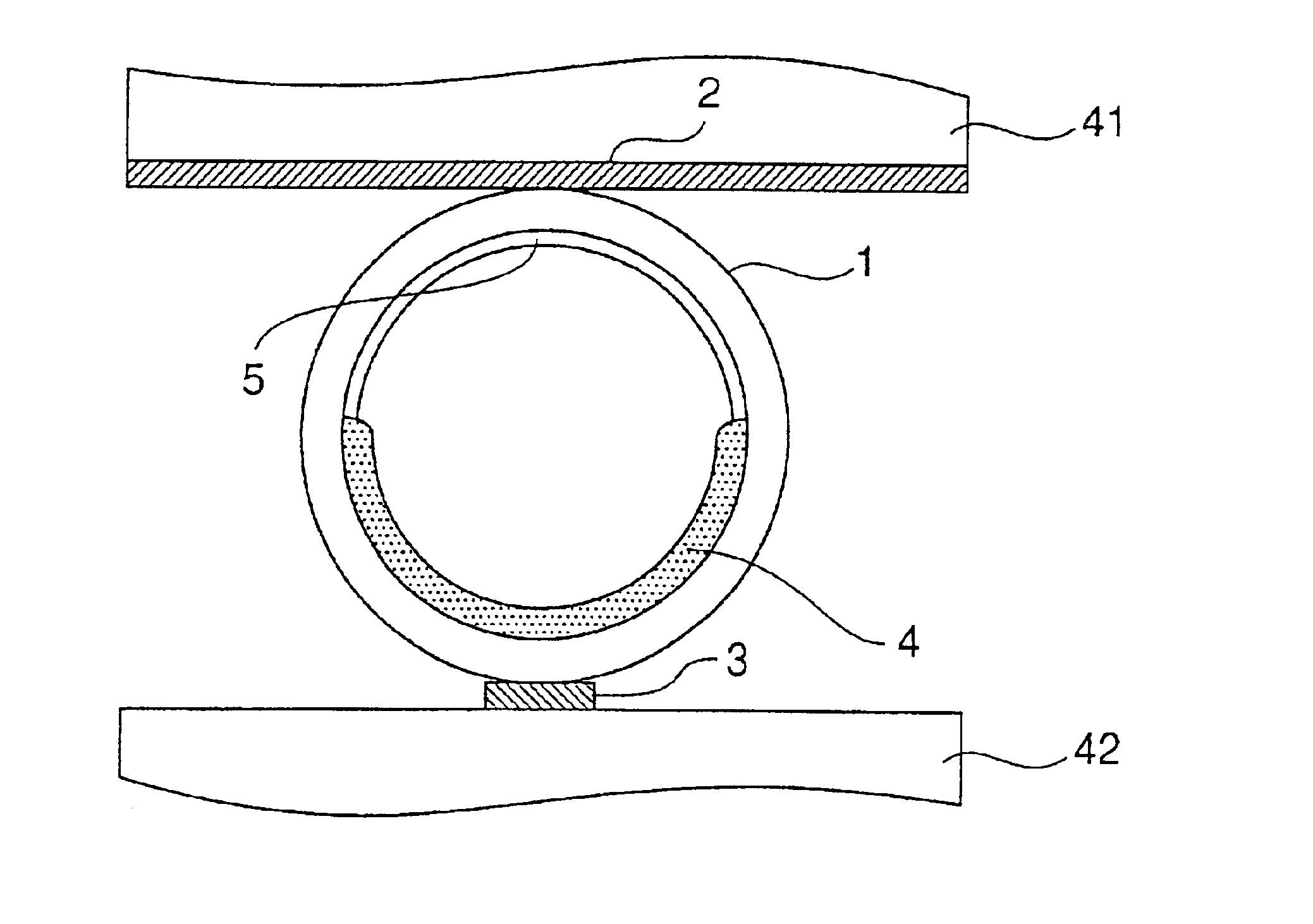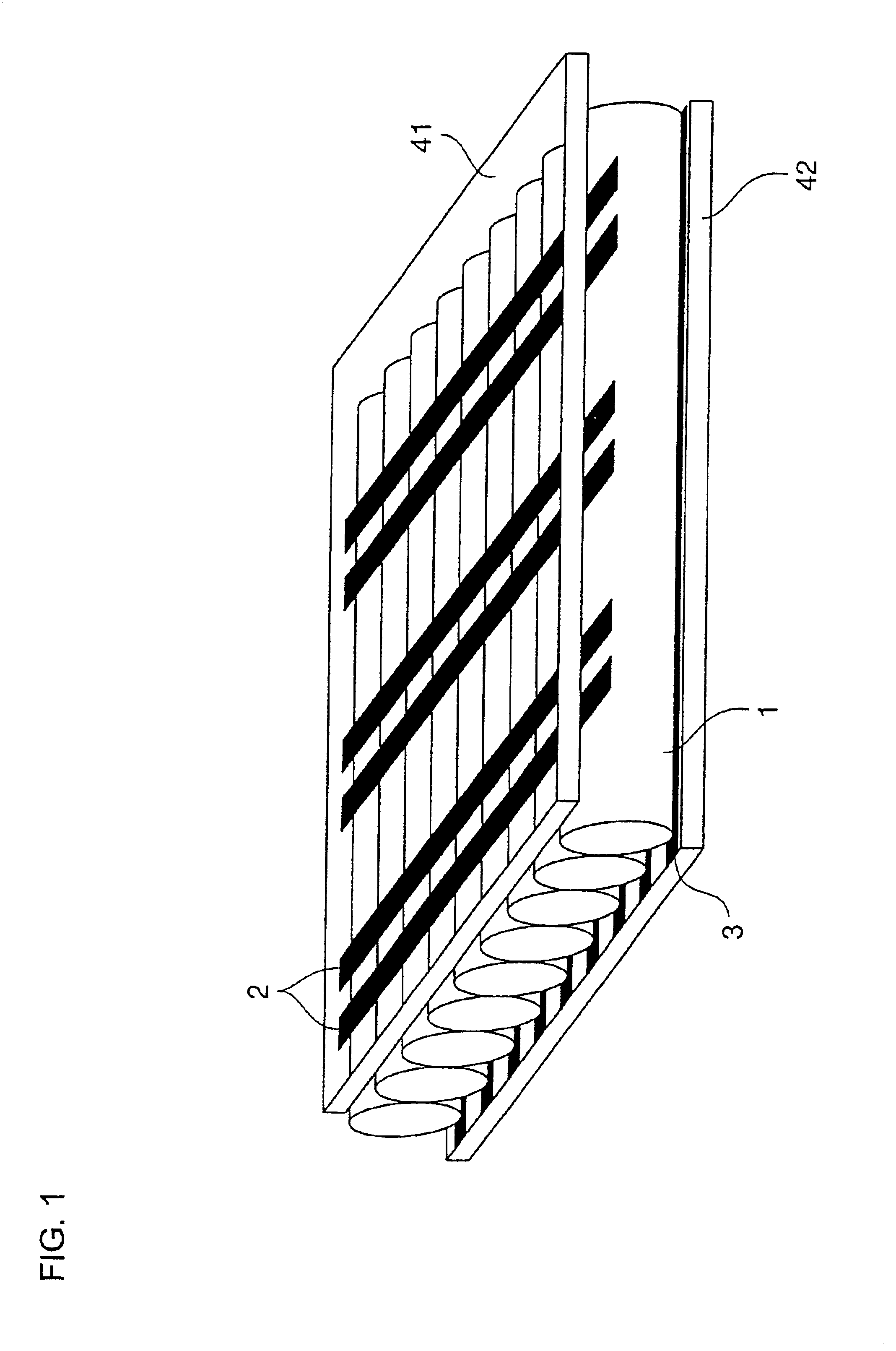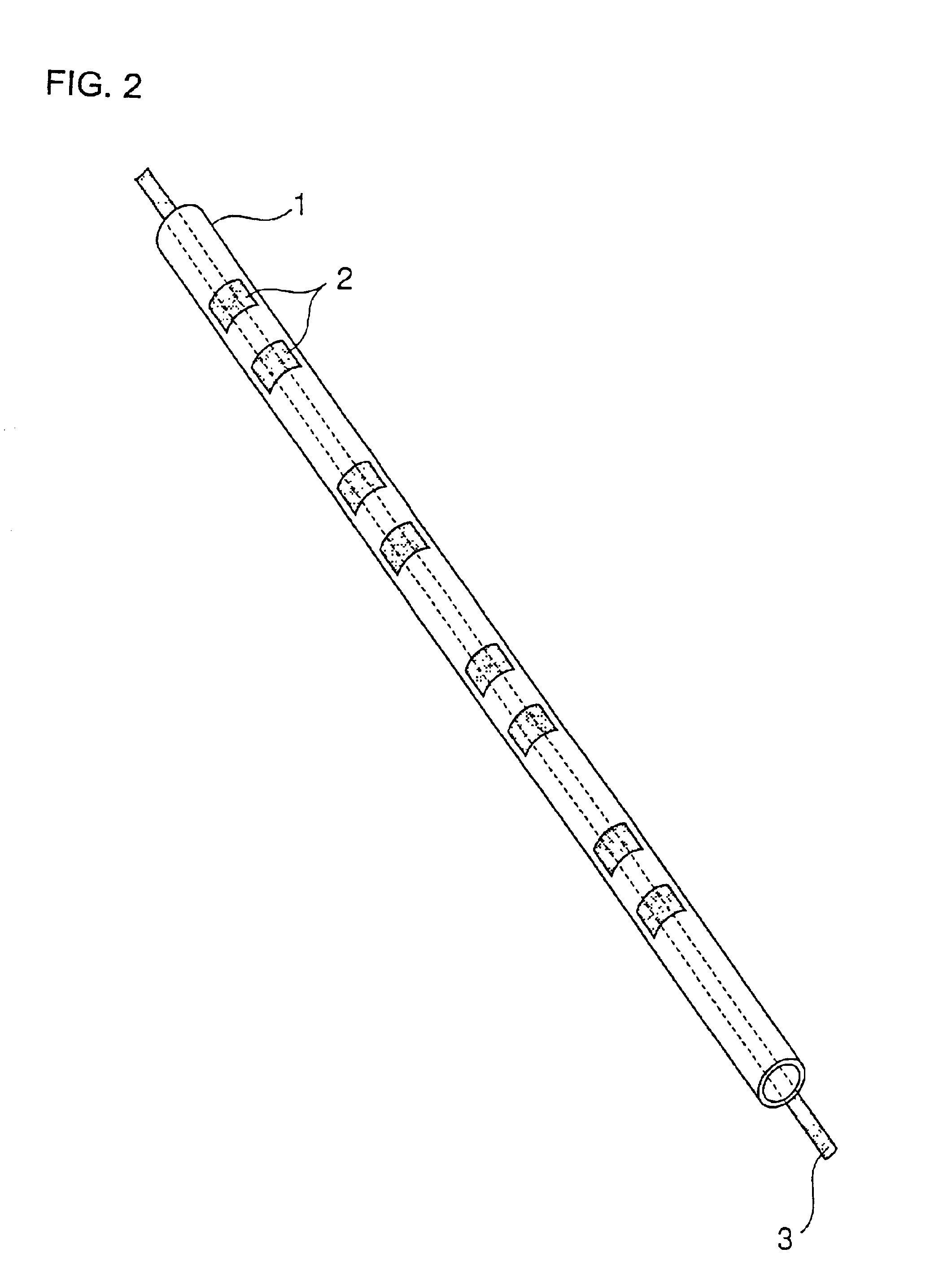Method of forming phosphor layer of gas discharge tube
a technology of gas discharge tube and fluorescence layer, which is applied in the direction of luminescence, lighting and heating apparatus, and application of luminescent coatings, etc., can solve the problems of reducing light emission efficiency, less improvement of discharge characteristics, and rapid degradation of phosphors by discharge, so as to prolong the life of display devices, increase light emission efficiency, and enhance image quality
- Summary
- Abstract
- Description
- Claims
- Application Information
AI Technical Summary
Benefits of technology
Problems solved by technology
Method used
Image
Examples
example
In the present example, the phosphor layer shown in FIG. 3 and FIGS. 4(a) and 4(b) was formed. First of all, 16 parts of phosphor powder, 2 parts of polyvinyl alcohol (a mean degree of polymerization of 2800), 6 parts of pure water, 23 parts of acetone and 53 parts of 1,3-dimethyl-2-imidazolidinone were used for the phosphor slurry.
The phosphor slurry was introduced into a tubular vessel formed of borosilicate glass having an outside diameter of 1 mm and an inside diameter of 0.8 mm in which MgO is uniformly formed on an internal wall surface. In the introduction, a solution (a low-viscosity solvent) containing 23 parts of acetone and 23 parts of 1,3-dimethyl-2-imidazolidinone was added to a solution containing 16 parts of phosphor powder, 2 parts of polyvinyl alcohol (a binding resin), 6 parts of pure water and 30 parts of 1,3-dimethyl-2-imidazolidinone immediately before the introduction. The tubular vessel is stationarily put horizontally in a sideways state so that the phosphor ...
PUM
| Property | Measurement | Unit |
|---|---|---|
| diameter | aaaaa | aaaaa |
| length | aaaaa | aaaaa |
| diameter | aaaaa | aaaaa |
Abstract
Description
Claims
Application Information
 Login to View More
Login to View More - R&D
- Intellectual Property
- Life Sciences
- Materials
- Tech Scout
- Unparalleled Data Quality
- Higher Quality Content
- 60% Fewer Hallucinations
Browse by: Latest US Patents, China's latest patents, Technical Efficacy Thesaurus, Application Domain, Technology Topic, Popular Technical Reports.
© 2025 PatSnap. All rights reserved.Legal|Privacy policy|Modern Slavery Act Transparency Statement|Sitemap|About US| Contact US: help@patsnap.com



